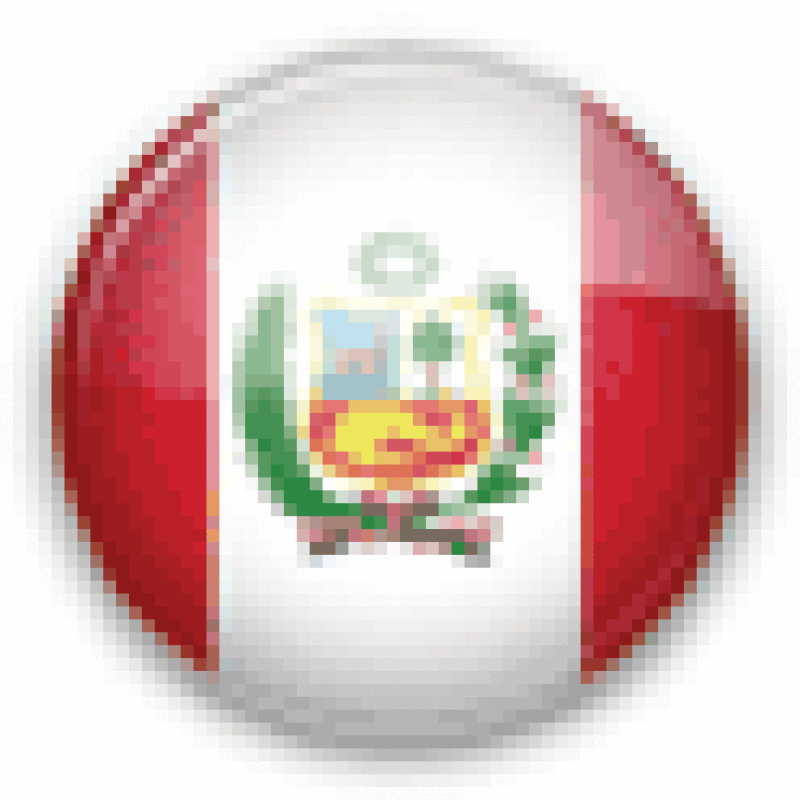| |
Participants in this discussion |
 |
Gilberto Meiches,
vice-president,
Banco Sofisa, Brazil |
 |
Federico Humbert,
president,
Banco General, Panama |
 |
Eduardo Torres-Llosa Villacorta,
chief executive,
BBVA Banco Continental, Peru |
 |
Juan Carlos Corrales Salas,
chief executive,
Banco Nacional, Costa Rica |
 |
María Luisa Rojas Giraldo,
chief financial officer,
Banco de Bogotá, Colombia |
How has your bank fared through the financial crisis?
FH, Banco General We have not been affected by the global financial crisis, thanks to conservative practices and strong discipline exercised throughout the bank’s history.
ET, BBVA Banco Continental So far, we have not suffered any significant negative effects – our ROE remains above 38%, our delinquency ratio is below 1.6% and our liquidity ratios are substantial. Even though our numbers are better than the average, the whole Peruvian financial system is performing pretty well.
JC, Banco Nacional We have focused our effort in rescheduling our customers’ obligations and in sacrificing a certain portion of our intermediation margin by lowering active interest rates.
Since our loan portfolio increased only a little – as the demand for credit reduced dramatically – our employees are placing more attention on the quality of assets, with a strict follow-up on our customers’ health. We are also increasing the collecting tasks. As a final consequence we will face a reduction of 33% in the annual net income.
GM, Banco Sofisa The bank aimed to preserve its strong balance in terms of asset and liability management during the financial crisis. In this way we opted to keep a high level of cash.
Keeping in line with its conservative culture, we reduced our credit portfolio by 22.3% from September 2008 to March 2009, mainly in short-term operations. We also assigned around R$700 million ($372 million) of our long-term credit portfolio.
As a consequence of this strategy the bank could bypass the crisis scenario in very good shape, keeping its historical quality, which we believe will provide the bank with the best conditions to grow again sustainably.
MG, Banco de Bogotá The impact of the international financial crisis in Colombia was marginal, due to the minimal exposure to toxic assets. Banco de Bogotá has showed a robust position due to its conservative credit-risk policies and procedures that minimize its exposure. The bank in its history has shown its ability to give value and security to its shareholders, depositors and creditors even when market conditions are adverse. The results of the bank during the first semester of 2009 are among the best in the banking system.
To deal with a troubled financial crisis Banco de Bogotá executed a comprehensive strategy that can be summarized in five main issues: revision and adjustment of credit-risk exposure for each of the corporate customers according to the borrower’s own vulnerability; tightening disbursement processes of retail and small business customers; increasing loan provisions; increasing equity; and reducing overhead costs.
How are you managing your liquidity needs?
GM, Banco Sofisa As mentioned, the bank assigned a part of its long-term credit portfolio and reduced by 22.3% the short-term loan operations. As a consequence of this strategy the bank kept above 50% of its deposits.
ET, BBVA Banco Continental In general, the Peruvian financial system has not experienced a significant need for liquidity – the overnight rate has remained below 1% in the past 12 months, thanks to the active intervention of the central bank and the general prudence of the banks in the management of the liquidity risk. Our case has been pretty much the same.
JC, Banco Nacional We depend mainly on deposits from our customers. As we are a stated-owned bank, our liquidity increases during the hard times. This paradoxical behaviour links with people being confident that the state bank will guarantee deposits. Therefore, liquidity has not been a major issue for our bank in the last two years.
FH, Banco General For us also, there has not been a decrease in our liquidity levels; on the contrary, primary liquidity is approximately $2 billion, which represents 29.5% in percentage terms.
MG, Banco de Bogotá We have not required additional liquidity throughout the crisis. Additionally the central bank increased the liquidity of the market and reduced the interest rate by 550 basis points.
What is the level of your core equity and do you have plans to raise that level? If so, how and when?
GM, Banco Sofisa There was no impact on the bank’s core capital during the crisis. As a consequence of its conservative culture and historically strong regulation from the Brazilian central bank, we had no exposure to foreign derivatives and therefore no impact from this kind of source. Also our strong credit asset management and the high level of our portfolio covered by collateral give us better conditions to manage the bank during turbulence.
In this way the bank foresaw a very good opportunity to maximize the value to its shareholders by buying back its shares. The reduction observed in our shareholders’ equity was a consequence of the 13,905,400 buy-back shares in 2008 and 2009, and the R$41 million distributed as interest on capital.
FH, Banco General Our equity amounts to $1.1 billion and total assets exceed $7.8 billion. There are no plans to increase the bank’s capital; however the bank’s historical policy has been to distribute approximately 50% of earnings to its shareholders and capitalize the other 50%. This could result in an increase in equity of $80 million this year.
ET, BBVA Banco Continental During the first quarter 2009, we increased our core equity by reinvesting 50% of last year’s benefits. So our actual capitalization rate is 13.1%, well above the regulatory rate of 9.5%. Given the actual slow growth rate of loans, we don’t plan to increase further our core capital in the short run.
JC, Banco Nacional The capital adequacy ratio is slightly above 12%. We received an important capitalization from the government of Costa Rica last December, amounting to $50 million. Our next plans are centred on recapitalizing the accumulated net income in the coming years.
MG, Banco de Bogotá The level of core equity – capital and reserves – of Banco de Bogotá as of June 2009 was Ps1.71 billion ($838 million) and it will rise over 10% by September 2009 according to the proposed distribution of profits.
Do you think the financial crisis is past its worst?
FH, Banco General You almost need a crystal ball to respond to this. The economic gurus are confused and have not reached an agreement on this topic. Frankly I do not know, but we must continue with prudence as it could last a bit longer.
GM, Banco Sofisa We believe the worst of the crisis is past but that the economy will continue to suffer some impacts during the second half of 2009 and first half of 2010. As a consequence of the decrease in industry demand and credit restrictions because of the current low liquidity environment, we believe it will take time for the extraordinary conditions observed before the beginning of the crisis to be achieved again.
ET, BBVA Banco Continental Yes. Both because of the massive government intervention and because the future write-downs that have to be done by many banks in the world are much more ‘understandable’ than those at the beginning of the crisis.
JC, Banco Nacional Yes, but recovery in Costa Rica will take at least until mid 2011.
MG, Banco de Bogotá We think the international financial crisis is past its worst. There are some leading indicators that show it. In the US unemployment is growing less than other periods, capital markets are improving faster and confidence indicators show a better situation. Therefore, interest rates are low and core inflation is controlled.
What’s the biggest challenge facing your bank over the next 12 months?
GM, Banco Sofisa Our biggest challenge will be to grow our credit portfolio sustainably, keeping assets at a high quality and consequently increasing its profitability to the levels observed before the crisis.
JC, Banco Nacional The biggest challenge will be helping our customers to maintain good health. So taking care of their financial needs on an individual base will possibly keep most of our attention and effort. Banco Nacional plays an important role within our country as a credit provider for all productive sectors; therefore, our partnership with our customers will include diligent loans approval and disbursement, which will also help to boost our economy and prompt recovery.
FH, Banco General A commercial credit contraction exists which puts our loan portfolio in a vulnerable position. This, in conjunction with extremely low interest rates on invested liquidity, could have a negative impact on yearly results. However, the first semester presents very flattering numbers and within the budget prepared by the administration.
ET, BBVA Banco Continental The first challenge is the ability to sustain our growth rate and net interest revenue, given the sheer decline in the growth rate of loans volume and in the level of interest rates; and the second one, to properly manage the expected increase in the delinquency rates.
MG, Banco de Bogotá The biggest challenges are: to recover growth rate levels of the loan portfolio, improving its quality; to maintain leadership in efficiency ratios compared with our peer group and the banking system; to continue strengthening our segmentation strategy; to keep sustainable growth and market leadership for our strategic business lines; and to strengthen and improve the sale of commissionable services.
How do you think Latin American markets will perform over the next 12 months?
GM, Banco Sofisa As Latin America was not so aggressively impacted by the crisis as the US and Europe, the markets could be in good shape again. We believe they will have a better performance than we saw in the past crisis since this time the countries of the region – especially Brazil, Chile and Colombia – have much healthier fundamentals when compared with the past.
FH, Banco General It is very difficult to predict what will happen. However, Panama has many things in its favour. The construction of the canal expansion, which represents an investment of more than $5 billion, and a new government which is taking decisive positions and has ample popular backing are factors that will certainly contribute to a continuous economic development.
ET, BBVA Banco Continental Latin American markets have recovered pretty fast in recent months. Future performance will depend very much on the fulfilment of the positive market expectations about the world recovery. A lot of uncertainty remains around this issue.
JC, Banco Nacional Growth of the economies will be low for another two years; the recent years’ growth pattern will not be seen until 2013. Credit to private and public sectors will also expand at a slow pace. Banks should not expect a full recovery of the profit levels observed in 2006 and 2007 for at least three more years.
MG, Banco de Bogotá We believe Latin American markets will be in a good situation next year. Although in 2009 the economy will probably show negative growth, there is a growing consensus that in 2010 it will recover at 3%. Central Banks have maintained interest rates at low levels and have provided liquidity. As the global economy recovers next year, foreign direct investment flows into the region are expected to pick up.








































